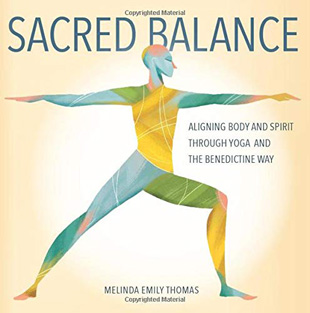"We often envision balance in terms of a balance-beam scale — one of those old scales with the single horizontal beam from which two trays hang. When the objects in each tray are of equal weight, the scale is in balance. While this may be true for purposes of measurement, it is unhelpful and perhaps even harmful to think of balanced living in terms of a scale. When we conceptualize balance in this way, we risk stasis and perfectionism. Life is not static. We are always growing and changing in response to circumstances and relationships. Perfection is an insidious and unattainable goal, defined by subjective externals, rather than an enthusiastic exploration of the fullness of our humanity.
"Instead, I prefer to think of balance in terms of color theory. Harmony and well-being are found when the particles and waves — the steadiness and the motion — of our lives amplify or counteract each other. Balanced living is not found in the mere elimination of one color or the addition of another. Balanced living is found in the conversation between the colors that are already there. It is the dialogue that matters.
"When we feel overexcited, overworked, worn down, or depleted, we know something is out of whack. Some part of our daily routine is dominating the conversation. All too often the stresses of life — the demands of work and family, the bombardment of media, the countless messages about being more successful or productive — drown out the quieting voice of the heart longing to be heard. Sacred balance is restored through practices that promote an interior and exterior orientation toward God — the Ground of Being from which health and wellness spring. The interior orientation includes our priorities, attitudes, and values, which drive our external actions. Our external actions nurture and grow our healthy inner selves. We cannot have one without the other. "The mission of the YMCA, where I work as a coordinator of the Mind-Body program, is, 'To put Christian principles into practice through programs that build healthy spirit, mind, and body for all.' Spirit, mind, and body: our primary colors. For all the rich diversity of every color in the spectrum, every part of our lives. Principles into practice: conversation with the colors of our days. Rooted in the Christian tradition, Benedictine spirituality is grounded in the understanding that God's presence is everywhere, in every color. While yoga, like Christianity, has many lineages, it too is anchored in the recognition that the Divine dwells within and without and that our path is to remember that wisdom."
